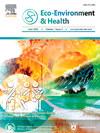Embracing global biodiversity toward a better planet
引用次数: 0
Abstract
Global biodiversity is the most essential component of the planet, and the Kunming-Montreal Global Biodiversity Framework (GBF) has been unanimously adopted by 196 parties worldwide in 2022 to achieve the global vision of a world of living in harmony with nature by 2050. Of particular importance is the timely update of the National Biodiversity Strategies and Action Plans (NBSAPs) and/or National Targets aligned with the GBF before the sixteenth meeting of the Conference of the Parties (COP16) to the Convention on Biological Diversity. Upon comprehensive evaluation of updated NBSAPs of 47 parties and updated national targets of 126 parties, we proposed pathways that could better inform the updating processes. First, the essential elements of the goals and targets of the GBF applicable to national circumstances should be equivalently translated into national policies and instruments. Second, when specific national circumstances do not match with those essential elements, parties need to determine their own national biodiversity targets based on their situation but in a way that maintains and reflects the ambition of the GBF. Furthermore, the key factors that promote the success of biodiversity conservation are highlighted in terms of the target alignment with the GBF, the ownership enhancement, and the capacity building. We anticipate that these measures could facilitate immediate actions to update the NBSAPs to align with the GBF at the highest level while remaining cost-effectiveness.
拥抱全球生物多样性,共创美好地球
全球生物多样性是地球最重要的组成部分,全球196个缔约方于2022年一致通过了《昆明-蒙特利尔全球生物多样性框架》(GBF),以实现到2050年人类与自然和谐共处的全球愿景。尤其重要的是,在《生物多样性公约》第十六次缔约方大会(COP16)之前,及时更新与GBF一致的国家生物多样性战略和行动计划(NBSAPs)和/或国家目标。在综合评估了47个缔约方更新的国家生物多样性战略计划和126个缔约方更新的国家目标后,我们提出了可以更好地为更新进程提供信息的途径。首先,适用于各国情况的GBF目标和指标的基本要素应同样转化为国家政策和文书。其次,当具体国情与这些基本要素不匹配时,缔约方需要根据自身情况确定本国的生物多样性目标,但要保持和反映GBF的目标。此外,从生物多样性保护目标与GBF的一致性、所有权增强和能力建设三个方面强调了促进生物多样性保护成功的关键因素。我们预计,这些措施将有助于立即采取行动,更新NBSAPs,使其在保持成本效益的同时,在最高水平上与GBF保持一致。
本文章由计算机程序翻译,如有差异,请以英文原文为准。
求助全文
约1分钟内获得全文
求助全文
来源期刊

Eco-Environment & Health
环境科学与生态学-生态、环境与健康
CiteScore
11.00
自引率
0.00%
发文量
18
审稿时长
22 days
期刊介绍:
Eco-Environment & Health (EEH) is an international and multidisciplinary peer-reviewed journal designed for publications on the frontiers of the ecology, environment and health as well as their related disciplines. EEH focuses on the concept of “One Health” to promote green and sustainable development, dealing with the interactions among ecology, environment and health, and the underlying mechanisms and interventions. Our mission is to be one of the most important flagship journals in the field of environmental health.
Scopes
EEH covers a variety of research areas, including but not limited to ecology and biodiversity conservation, environmental behaviors and bioprocesses of emerging contaminants, human exposure and health effects, and evaluation, management and regulation of environmental risks. The key topics of EEH include:
1) Ecology and Biodiversity Conservation
Biodiversity
Ecological restoration
Ecological safety
Protected area
2) Environmental and Biological Fate of Emerging Contaminants
Environmental behaviors
Environmental processes
Environmental microbiology
3) Human Exposure and Health Effects
Environmental toxicology
Environmental epidemiology
Environmental health risk
Food safety
4) Evaluation, Management and Regulation of Environmental Risks
Chemical safety
Environmental policy
Health policy
Health economics
Environmental remediation
 求助内容:
求助内容: 应助结果提醒方式:
应助结果提醒方式:


